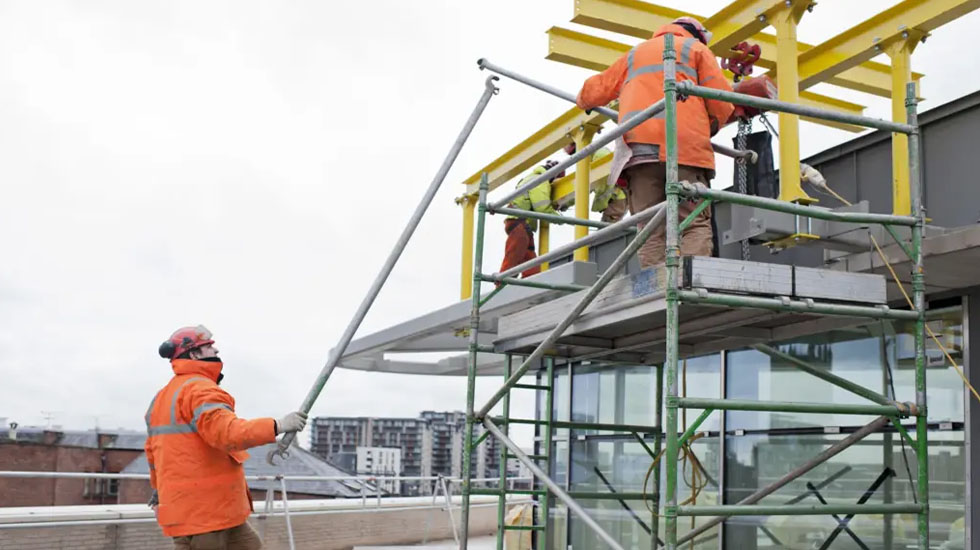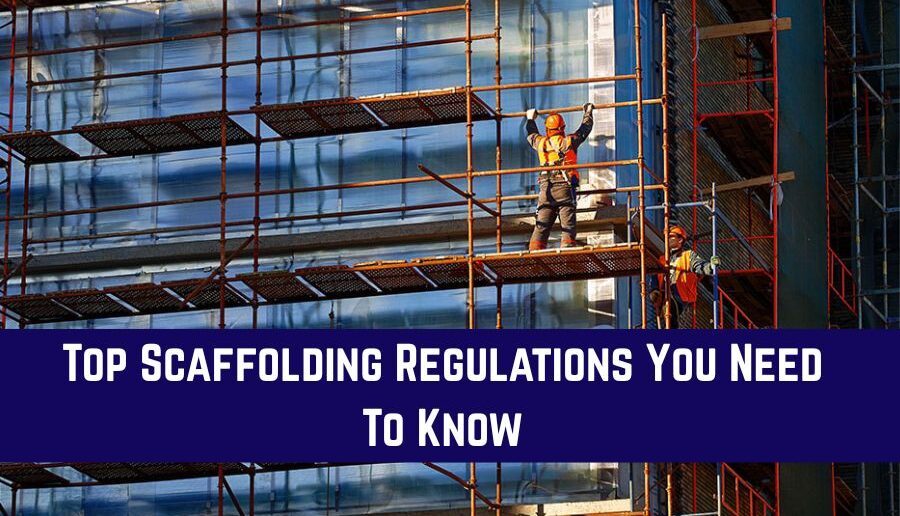Many kinds of scaffolding regulations emphasize the importance of competent personnel. While discussing the top scaffolding regulations, the focus stays on fall protection as it matters. For that, guardrails and personal fall arrest systems are required for high platforms, as it’s important. If the platforms are specifically 10 feet or higher, then these regulations become necessary. Many other areas are also covered under the regulations, including the load capacity of scaffolds. Regular inspection is a part of safety regulations, which is to ensure safe practices are followed. This blog has explained the top scaffolding regulations to know about in detail for everyone’s safety.
Table of Contents
ToggleHow are Scaffolding Regulations Important?
1. Worker Safety and Well-being
Many regulations establish baseline safety requirements that are important for scaffolding workers.
These help with:
- Preventing Injuries and Fatalities
- Creating Safe Working Platforms
2. Legal and Financial Benefits
If you follow these top regulations, then you can save yourself from any legal issues with:
- Legal Compliance
- Cost Prevention
- Employer Accountability
3. Improving Workplace Practices
Ensuring proper training:
To avoid scaffolding hazards, proper training is needed for the workers, which is an overall benefit.
Promoting regular inspections:
Regular inspection is required to be done by a competent person, which is helpful to identify defects.
Establishing clear procedures:
These safe precautions for scaffolding are for the betterment of all, as these indicate:
- Assembly
- Modification
- Dismantling
Ensuring proper equipment use:
All workers have to understand the load rating for scaffolding, so it is followed for their own safety. This includes never overloading the weight, which is a requirement of the regulations.
List Of The Top Scaffolding Regulations

1. Fall Protection
Guardrails and Toe Boards
To prevent falls, guardrails are a must for the scaffolds, as this regulation is about higher platforms. For platforms like these, a risk arises where the workers or objects may fall, which makes this a need. Other than that, toe boards are also important just as much, as they help protect against falls from platforms.
Personal Fall Arrest Systems (PFAS)
For employees working 10 feet above the ground, this is an important scaffolding regulation. PFAS is a requirement for these workers, as the risk of falling is common. Guardrails can also be used as a replacement for the safety of the workers.
Anchorage
For safety, the lanyard of a PFAS should be attached to a secure member as per the regulations. If not a scaffolding member, then it could be attached to the structure itself.
2. Competent Personnel & Training
Competent Person:
A competent person is a must for scaffolding operations, who will have authority. The responsibility of this person will be to take corrective actions, and scaffolds must be inspected. This is to be done at regular intervals, so that the scaffold is checked before each use by that person.
Training:
All of the workers involved with using or erecting scaffolding must be well-trained on these things:
- Safe assembly
- Use
- Inspection
- Recognizing hazards
3. Scaffold Structure & Stability
Stable Base & Footing:
Another regulation is that there must be stable footings to prevent situations like shifting or collapse. Other than stable footings, base plates are also required for that purpose to add to safety.
Stable Construction:
Construction also matters, as it should be stable enough to prevent falls for workers. They should be properly built in a way that there’s a presence of secure joints in scaffolding operations. Level platforms are also needed.
Load Capacity:
The design of scaffolds should be made with safety in mind, as they should be able to handle the weight. Without exceeding their load capacity, the scaffolds should be able to handle the weight of:
- Workers
- Tools
- Materials
Securing the Scaffold:
To ensure stability, the scaffold must be well secured to the structure itself at all costs. This is to make sure the workers don’t have to risk their lives, in case movement happens.
4. Inspections & Maintenance
Pre-Use Inspections:
The assigned competent person has to look out for these things by inspecting the scaffold daily before use:
- Damage
- Defects
- Missing components
Post-Event Inspections:
After some significant alterations, inspection should be on the scaffolding post-event from:
- High winds
- Heavy rain
Maintenance:
Maintenance is important, so if any scaffolding is damaged, it should be removed. If removing is not an option, then it must only be used after the scaffolding is repaired.
What Are Some Other Important Regulations?
Safe Access: Safe access should be available for every worker involved in scaffold work, with things like:
- Ladders
- Stairs
It is prohibited for anyone to climb the cross braces for the safety of every worker.
Clear Platforms:
The scaffolding platforms must be well cleaned regularly, so that the workers don’t slip from:
- Debris
- Snow
- Ice
Electrical Hazards:
There should be distances from overhead power lines, so the scaffolding stays safe.
Personal Protective Equipment:
Every worker should be given safe PPE, which has to be appropriate to the work, including:
- Hard hats
- Non-slip footwear
Conclusion
Scaffolding regulations are important for the safety of the workers and objects while working. To stay safe, regulations like inspection and stability matter for scaffolding work to go smoothly. For fall protection, certain regulations need to be followed, including PFAS. Every worker must wear appropriate attire, which is needed for scaffolding work with PPE.
FAQs
Q – Are there also some golden rules of scaffolding?
A – Yes, you’re right, there are actually some golden rules of scaffolding that include:
- Prioritizing quality materials
- Awareness of weight limitations
- Regular inspections
- Good load management
Q – How many types of OSHA scaffolds are there?
A – There are three types in total, as the workers of scaffolds are divided into:
- Suspended Scaffolds
- Supported Scaffolds
- Aerial Lifts
Q – What is the required PPE for scaffolds?
A – The required PPE for scaffolds includes:
- Hard hat
- Non-slip safety footwear
- Full-body harness
- Safety glasses
- Gloves
Q – What are some common types of scaffolding available?
A – Here are some of the common types of scaffolding seen around:
- Single & Double
- Trestle
- Tubular
- Fabricated frame
- Mobile
- Suspended scaffolding

